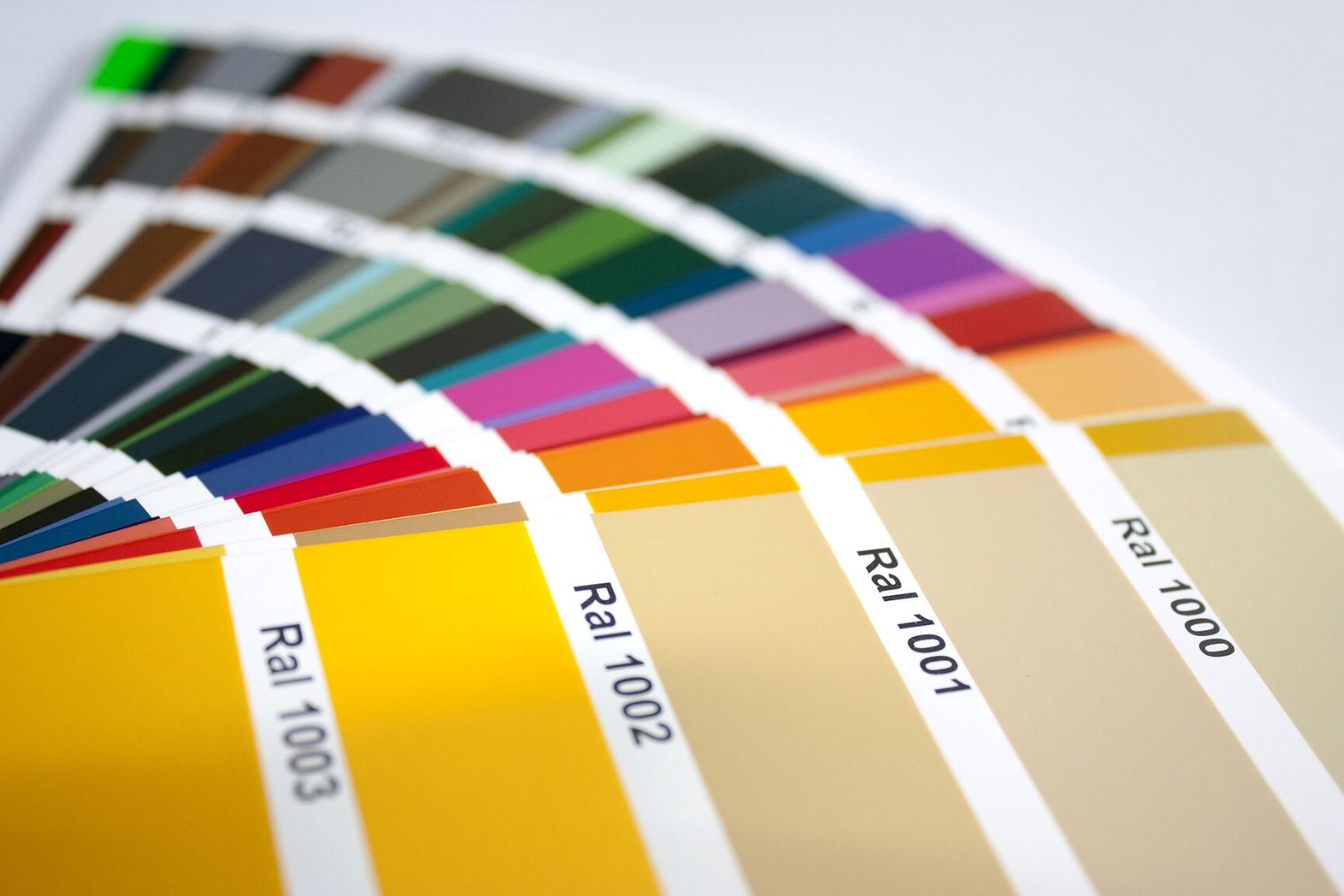RAL colours are a standard coding system mainly used in Europe so that they are approved in various sectors such as painting, industry, and construction.
The RAL system was developed by the Institut für Gütesicherung und Kennzeichnung e.V. (Institute for Quality Assurance and Labelling) in Germany in the 1920s and 1930s and is still in force today.
RAL is an acronym for ‘Reichs-Ausschuß für Lieferbedingungen und Gütesicherung’, which translates in english as ‘National Commission for Delivery Deadlines and Quality Assurance’.
In 1927, the German Commission established the first 40-colour palette. This was an important development because until then manufacturers and customers exchanged samples to describe a colour, but from now on they relied on the 4-number RAL colour code standard.

What do the RAL colour number indicate?
The 4 number of the RAL colour are subdivided as follows:
- First number identifies the colour grade:
- 1xxx yellow: RAL 1000 greenish beige to RAL 1034 pastel yellow
- 2xxx orange: RAL 2000 yellowish orange to RAL 2013 pearl orange
- 3xxx red: RAL 3000 fire red to RAL 3031 oriental red
- 4xxx violet: RAL 4001 reddish lilac to RAL 4012 pearl blackberry
- 5xxx blue: RAL 5000 purplish blue to RAL 5026 pearl midnight blue
- 6xxx green: RAL 6000 patina green to RAL 6038 bright green
- 7xxx grey: RAL 7000 vaio grey to RAL 7048 pearl mouse grey
- 8xxx brown: RAL 8000 greenish brown to RAL 8029 pearl copper
- 9xxx white/black: RAL 9001 cream white to RAL 9023 pearl dark grey
- The other 3 numbers are chosen sequentially and identify the colour shade
What RAL colour palettes are available?
Over the years, there have been several updates in the RAL colour samples. Here are the main ones:
- In 1960, additional colours were introduced, bringing the number up to 216 colours in the RAL Classic
- In 1993, the RAL Design scale was created to meet the needs of architects, designers, and advertisers. It includes 1,825 colours.
The colours of the Classic and Design scales do not overlap.
Other available scales are:
- RAL Effect consists of 420 solid colours and 70 metallics. Included in this palette is the first system based on water-based paints without the use of heavy metals such as lead, cadmium, and chromates.
- RAL Plastics P1 and P2 are used for plastics and consist of 100 and 200 colours of the RAL Classics and Design scales respectively.

What finishes are available for RAL colours?
Each RAL colour is available in different finishes: glossy, matt, metallic, textured and even grinz.
The finish changes according to the material on which it is applied and is adapted to each customer’s needs.
In which areas do RAL colours apply?
The sectors in which RAL colours are used are varied. Some examples are:
- Paint: to identify paint colours for construction, industry and even automotive.
- Design: for the choice of colours in graphic and industrial design.
- Architecture: to standardise the choice of colours for cladding, facades and building materials.
- Safety: to identify safety signals, as in road signs and emergency signals.

What type of RAL paint is used on ABC products?
In the case of ABC products, the paint is powder-coated, i.e. electrostatically applied to the metal components, which are then passed through an oven to harden the paint and create a durable protective layer. The recommended finish for ABC equipment is textured or grinz.
All ABC products, at the customer’s request, are painted by our external collaborator.
Some examples already realised are: leather horse trolley, horizontal cabinet for cutting dies, vertical cabinet for stock cutting dies and sewing cabinet.
